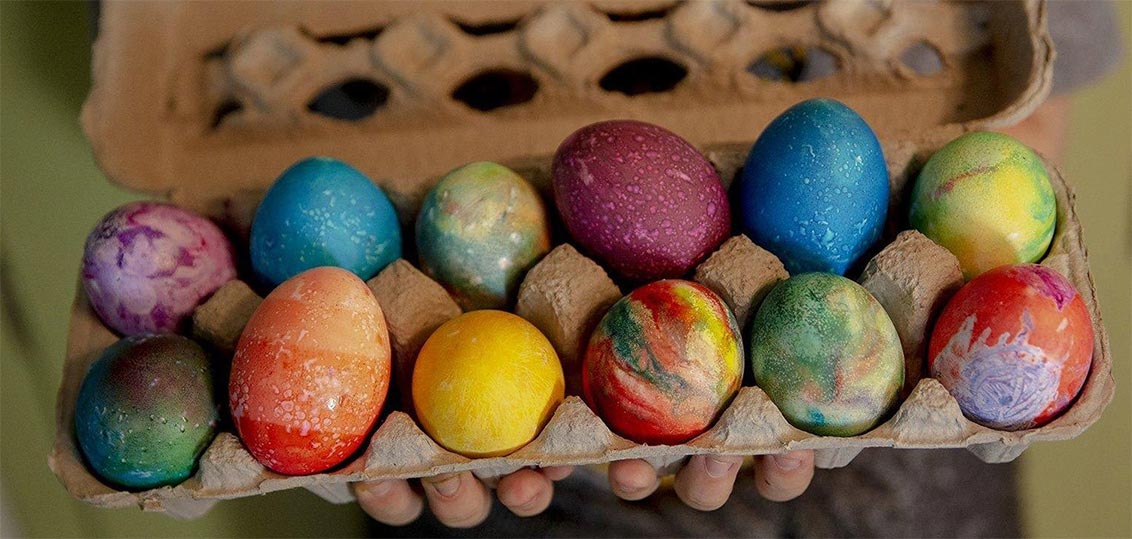Is dyeing & decorating eggs your favorite Easter tradition? If so, these tips and tricks will make your eggs turn out great each time.
Your home is full of items that can be used to make eco paint. Common food items like coffee; onion skins and red cabbage may be used to transform the plain white eggs into multicoloured décor. Kids will particularly love discovering the different colours they can make – allowing them to experiment using bowls of cold dyes and hard-boiled eggs.
Naturally dyeing eggs is an eco-friendly way for celebrating the Easter holidays and makes for a great table centerpiece. This technique largely involves boiling your eggs with a dye, the high temperatures let the dye saturate the shells, leading to more intense and uniform colours. With this cold dipping technique, the dye ingredients and eggs are separately boiled. The alternative then produces delicate, translucent shades, but might result in some jagged colouring unless you vigilantly rotate the eggs while in the dye.
To make eco paint, you can find all the ingredients needed in your kitchen. For instance, a yellow turmeric dye needs three tbsps. of turmeric. To make the red cabbage dye, you need 4 cups of chopped cabbages. On the other hand, the onionskin dye needs four cups of skins from around 12 onions. Finally, the beet dye needs 4 cups of chopped beets and a coffee dye utilizes 1 quart of strong black coffee rather than water.
Color glossary
Sometimes natural dyes can produce unexpected results, so, you shouldn’t be surprised if the red cabbage dye produces blue eggs. You can use the guide below to help achieve the desired colors.
- Sienna – Boil your eggs in the onion skin for about 30 minutes
- Deep gold – Boil your eggs in the turmeric solution for about 30 minutes
- Pale yellow – Soak your eggs in turmeric solution (room temperature) for about 30 minutes
- Dark rich brown – Boil the eggs in black coffee for about 30 minutes
- Orange – Soak your eggs in onion-skin solution (room temperature) for about 30 minutes
- Light brown – Soak eggs in black coffee (room temperature) for about 30 minutes.
- Light pink – Soak the eggs in beet solution (room temperature) for about 30 minutes.
- Light blue – Soak your eggs in the cabbage solution (room temperature) for 30 minutes.
- Royal blue – Soak your eggs in a cabbage solution (room temperature) overnight.
References
Easter crafts with kids: How to dye and decorate easter eggs. (2018, March 31). HuffPost UK. https://www.huffingtonpost.co.uk/entry/how-to-dye-easter-eggs_uk_5ab50e33e4b054d118e23a08
Brighten up easter with naturally dyed eggs. (2021, March 28). The New York Times – Breaking News, US News, World News and Videos. https://www.nytimes.com/2021/03/27/at-home/naturally-dyed-easter-eggs.html
The Editors of Southern Living. (2017, January 27). 21 easter egg DIY ideas that are oh-so-Cute and easy. Yahoo News – Latest News & Headlines. https://news.yahoo.com/9-easter-egg-diy-ideas-194044478.html

